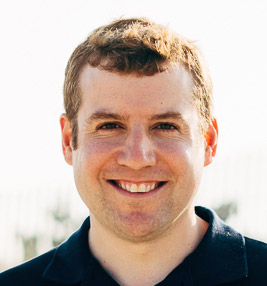With a final tally of 54 to 45, Judge Neil M. Gorsuch was confirmed by the U.S. Senate to become the 113th justice of the Supreme Court.
Justice Gorsuch’s confirmation puts an end to a yearlong saga regarding who would fill the late Justice Antonin Scalia’s vacant seat. It also fractured certain political conventions as Senate Republicans used the “nuclear option” to end the filibuster and bring the nomination to a vote with a simple majority. The effect was that Gorsuch could be confirmed with a simple majority rather than a supermajority of 60.
 We discussed the confirmation with Jonathan Kastellec, an assistant professor at Princeton’s Department of Politics and an affiliated faculty member at the Woodrow Wilson School’s Center for the Study of Democratic Politics (CSDP). Kastellec’s main research area is judicial politics, but he also has broad interests in the study of American politics.
We discussed the confirmation with Jonathan Kastellec, an assistant professor at Princeton’s Department of Politics and an affiliated faculty member at the Woodrow Wilson School’s Center for the Study of Democratic Politics (CSDP). Kastellec’s main research area is judicial politics, but he also has broad interests in the study of American politics.
Q. Filling the vacant Supreme Court seat has been anything but smooth. First, there was the Republicans’ refusal to hold hearings for Merrick Garland. Then there was a partisan filibuster by the Democrats, which Senate Republicans ended with the “nuclear option.” Now, Neil M. Gorsuch has been confirmed as a Supreme Court justice. What’s your reaction to this?
Kastellec: Once President Donald Trump was elected, the only real suspense was whether he would follow his campaign pledge to appoint a reliably conservative justice. He did that by nominating Neil Gorsuch. After that, there was little suspense about whether Gorsuch would be confirmed; the only question was whether Senate Democrats would choose to filibuster the nomination. They did, and, as expected, Senate Republicans exercised the “nuclear option” by ending filibusters for Supreme Court nominations.
Notably, this is not the first time a justice has been confirmed with fewer than 60 votes —Justices Thomas and Alito, for example, were confirmed with 52 and 58 votes, respectively. It was, however, the first time a filibuster clearly would have blocked the appointment of a Supreme Court nominee. (In 1968, the nomination of Abe Fortas to become chief justice failed to overcome a filibuster, but Fortas’ nomination was mired in scandal and it’s unclear whether he would have been confirmed even in the absence of a filibuster).
Q. What can we expect from Gorsuch? And how will he fit with the rest of the Supreme Court?
Kastellec: On the one hand, we can predict with fairly high confidence that Gorsuch will reliably serve as a conservative vote, thereby placing him in the conservative bloc on the court, along with Chief Justice Roberts, Justice Samuel Alito and Justice Clarence Thomas. Because Gorsuch is replacing Justice Scalia, who was also part of the conservative bloc, his appointment does not change the overall balance of political power on the Court — Justice Anthony Kennedy should remain the median justice in most of the 5 to 4 decisions that divide the liberals and conservatives.
However, among the conservative justices (as well as the liberals), there are interesting nuances in how the justices approach different areas of the law. Justice Scalia, for example, tended to vote in favor of criminal defendants more often than his conservative colleagues in Fourth Amendment cases and cases involving the right of defendants to confront their accusers in Court. Some observers have speculated that Gorsuch may take a similar approach in Fourth Amendment cases, based on his record as on the Courts of Appeals. With Judge Gorsuch now Justice Gorsuch, we will soon find out.
WWS Reacts is a series of interviews with Woodrow Wilson School experts addressing current events.

